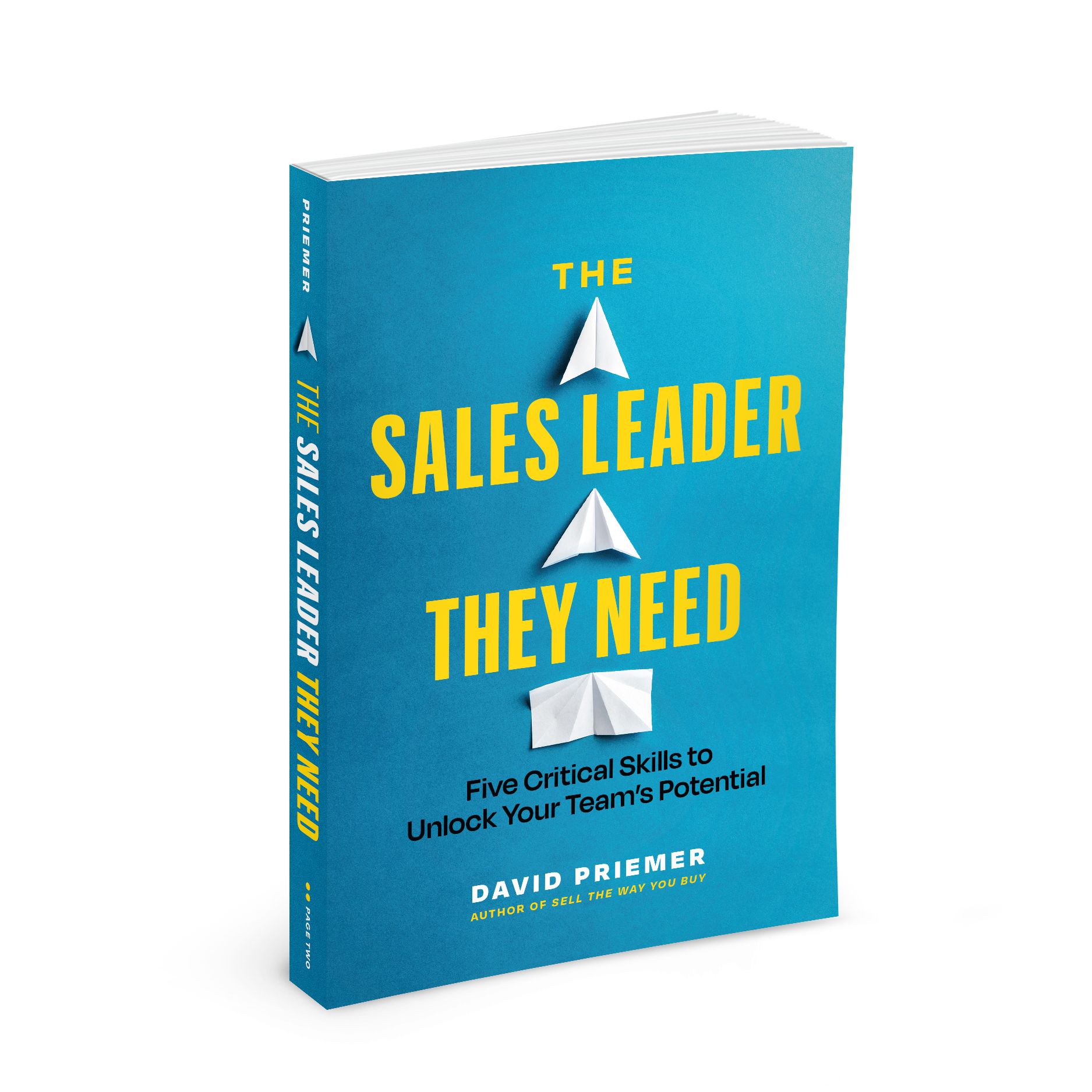The One Question Sales Leaders NEED to Ask Their Teams
As sales leaders, our job is to help our teams develop their skills so they sell more of our products and services quicker and with less friction. So how do we do that? We arm them with powerful qualification tools, tactics to help them build credibility with clients, and do our best to help them reveal blind spots.
But despite our very detailed preparation, training, and go-to-market execution we often lose sight of the simplest things and end up with blind spots we’re not even aware of. In fact, most of the sales blockers we fail to recognize are often sitting right in front of us the whole time. For your team, even a small change to a key process can mean the difference between sales success or failure. For example, shedding one or two low-value responsibilities, being armed with a simple one-page overview of your integration strategy, or even a small change to a key process.
So do you reveal the blockers and blind spots lurking in the dark corners of your sales operation?
One technique I’ve found works amazingly well is adapted from one of my favorite books, The One Thing: The Surprisingly Simple Truth Behind Extraordinary Results. It uses a simple focusing approach as a metaphorical flashlight and all you have to do is ask your team to complete this sentence:
“I could sell more of our products/services if _______________”
That’s it! What do you need in order to sell more?
It’s amazing how infrequently this simple question gets asked. Yet what’s more amazing is the feedback I get from leaders who consistently end up with highly tangible and actionable insights after asking it.
Here are three simple ways you can use this technique to supercharge sales productivity in your organization:
The group setting
In groups, this technique can be super-helpful for crowdsourcing common feedback and blockers. For example, Sales leaders who ask this question in their team meetings often hear things like:
“I could sell more of our products/services if _______________”
- “…we were able to offload some of our non-selling responsibilities to other groups.” (e.g. renewals, technical demonstrations, support, billing etc)
- “…we had a pricing model that was more competitive at the high end of the market.”
- “…we updated the messaging on our website to be more consistent with the business challenges we hear from customers.”
- “…we were able to respond more quickly to inbound requests for information.”
Interestingly sometimes the feedback you get is actually just a “perceived” sales blocker instead of a real one. For example, one leader mentioned that a sales rep cited a rigid travel policy as the reason why they couldn’t get more face-time with their clients and ultimately sell more. In the end, the blocker turned out to be a simple misunderstanding of the policy and its perceived restrictions. After a two-minute conversation, the policy was clarified and the blocker was resolved!
While not all of these things will be in the direct control of the group or the sales leader, crowdsourcing the feedback uncovers key blind spots that the leader can then work with key stakeholders in other areas of the organization to address.
The targeted setting
This technique works equally well in targeted applications. In other words, when the request is focused on a particular functional area or business need. For example, in our quarterly sales reviews, our Marketing team is often invited to learn about the Sales team’s experience in the field and how they can best support them in driving business. In preparation for such a meeting you might ask the Sales team to complete this sentence:
“The marketing team can help me sell more of our products/services by ___________”
As before, asking this question can yield insightful feedback like:
- “…running our awesome lead gen webinars monthly instead of quarterly.”
- “…producing a one-page customer-facing summary of our competitive differentiators.”
- “…increasing the spending on our SEO campaigns because they produce the highest quality leads.”
The key here is listening and aggregating the feedback, this time in a more targeted and context-specific fashion.
The individual setting
Sales leaders often meet with their reps in a 1:1 coaching context to discuss operational and developmental needs/blockers. In these cases the blockers you’re looking to uncover will be more personal; things people may not be comfortable sharing in a group setting. The question, however, can still be the same:
“I could sell more of our products/services if __________”
…may yield answers like:
- “…you and I (i.e. my manager) had more 1:1 coaching time.”
- “…my experienced teammates were more willing to share their winning secrets.”
- “…if I were able to strike a better work/life balance.”
The key here is being sensitive to the needs of the individual while at the same time using these aggregated insights to improve the effectiveness of the team.
BONUS TIPS:
Ask often
Like most sales effectiveness strategies, this one should NOT be “one-and-done.” Asking this question often across these three contexts will yield a constant stream of small but actionable insights. So get in the habit of asking!
Go beyond sales
This approach works equally well for all functional areas of your business. Simply replace “sell more software” with any functional competency or deliverable to yield similar results for any individual or group (i.e. “I could develop better solutions if…” or “deliver better customer services if…”).
Selling is never easy, but it’s much harder when you have blind spots you’re not even aware of. The good news is that you’re one simple question away from getting the highly actionable insights you need to address them. Just complete the sentence!
We promise never to send you junk or share your email! Just helpful sales insights.














Leave a Reply
Want to join the discussion?Feel free to contribute!